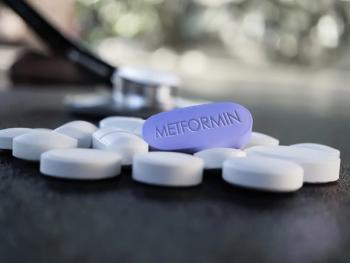
Gamification intervention to improve physical activity during postpartum
Postpartum mothers at elevated cardiovascular risk significantly increased their physical activity throughout 12 weeks by engaging in a digital health intervention that used remote monitoring, gamification and social incentives, according to the results of a randomized clinical study published in JAMA Cardiology.
Principal investigator Jennifer Lewey, MD, MPH, a cardiologist and director of the Women’s Cardiovascular Health Program at Penn Medicine in Philadelphia, takes care of many postpartum women who had pregnancies complicated by preeclampsia.
“Because we know that these hypertensive disorders of pregnancy are risk factors for future heart disease, I focus on discussing the risk of heart disease and strategies to prevent it,” Lewey told Contemporary OB/GYN®. “For a young, otherwise healthy woman, the focus is really on adopting a healthy lifestyle.”
Lewey discovered that most of these women desired to be healthier – for themselves and their families – but it was difficult for them to make the time and start the process. “So we looked at the literature to understand what behavioral strategies have been successful in motivating other populations to be more physically active,” she said.
Lewey’s colleague and co-author at Penn Medicine, Mitesh Patel, MD, MBA, was instrumental in developing an intervention using gamification, principles of behavioral economics, and social incentives to help increase physical activity in various populations. “Thus, we decided to use the intervention as a template and adapt it to a postpartum population,” Lewey said.
The 12-week randomized clinical trial enrolled 127 postpartum individuals, at an average of 8 weeks postpartum, who delivered at the University of Pennsylvania and had a hypertensive disorder of pregnancy between October 2019 and June 2020.
All participants received a wearable activity tracker, established a baseline step count and selected a step goal greater than baseline.
Participants in the control arm (n = 64) received daily feedback on goal attainment, whereas participants in the intervention arm (n = 63) were placed on virtual teams and enrolled in a game with points and levels for daily step goal achievement and informed by principles of behavioral economics.
After adjusting for baseline steps and calendar month, participants in the intervention arm achieved a significantly greater increase in mean daily steps from baseline compared to the control arm: 647 more steps (P = 0.009).
Participants in the intervention arm also attained their steps goals on a greater proportion of participant-days than the control group: 0.47 vs. 0.38, respectively, for an adjusted difference of 0.11 (P = 0.003).
Lewey found some of the findings unexpected. “On one hand, the intervention has been shown to be effective in other populations and it was indeed effective in our population,” she said. “However, I was surprised to see the treatment effect between the two groups narrow over time, suggesting that we may need different strategies to maintain engagement in this population.”
Lewey was also surprised that study enrollment did not slow down, due to the COVID-19 lockdown order. “This suggests that postpartum women were still looking for opportunities to connect with other people and be active, despite the pandemic,” she said. “Also, because our intervention was remote, we could continue to enroll in the study.”
Increasing physical activity is an important strategy to lower blood pressure and prevent hypertension, “which is a leading risk factor for heart disease in young women,” Lewey said. “So my hope is that we can identify ways to sustain our treatment effect over time to reach this clinical advantage.”
Lewey is also hopeful that strategies continue to be developed that emphasize engaging women in the postpartum period to improve cardiovascular health. “Not only can we achieve benefit for mom, but potentially improve health for the whole family,” she said.
Reference
- Lewey J, Murphy S, Zhang D, et al. Effectiveness of a text-based gamification intervention to improve physical activity among postpartum individuals with hypertensive disorders of pregnancy: a randomized clinical trial. JAMA Cardiol. Published online April 20, 2022. doi:10.1001/jamacardio.2022.0553
Newsletter
Get the latest clinical updates, case studies, and expert commentary in obstetric and gynecologic care. Sign up now to stay informed.










